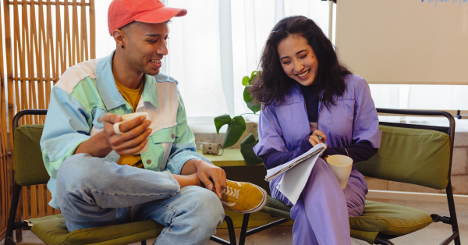7 Proven Strategies for Creating an Effective Co-teaching Relationship

Successful Co-Teaching Strategies
Successful Co-Teaching Strategies
Successful Co-Teaching Strategies
Successful Co-Teaching Strategies
Successful Co-Teaching Strategies
Successful Co-Teaching Strategies
Introduction
Co-teaching, a collaborative partnership between educators, has gained popularity in recent years for its potential to enhance student learning outcomes. However, establishing and maintaining an effective co-teaching relationship requires careful planning, communication, and mutual respect. In this article, we’ll explore seven proven strategies for creating a successful co-teaching partnership that maximizes the strengths of each educator involved.
1. Establish Clear Roles and Responsibilities
One of the fundamental elements of a successful co-teaching relationship is clarity regarding each educator’s roles and responsibilities. Before the school year begins, co-teachers should sit down together to discuss their strengths, expertise, and preferences. This conversation will help identify who will take the lead in different aspects of instruction, classroom management, and assessment.
2. Foster Open Communication
Effective communication is essential for any collaborative effort, and co-teaching is no exception. Co-teachers should establish regular communication channels, such as weekly meetings or shared digital platforms, to discuss lesson planning, student progress, and any challenges that arise. Additionally, they should create an environment where feedback is welcomed and constructive criticism is given respectfully.

3. Model Effective Teaching PracticesNo two classrooms or students are alike, so co-teachers must be flexible and adaptable in their approach. They should be willing to adjust lesson plans, teaching strategies, and classroom routines based on the needs of their students. This flexibility allows co-teachers to respond effectively to unexpected situations and ensure that all students receive the support they need to succeed.4. Capitalize on Each Other’s Strengths
One of the greatest advantages of co-teaching is the opportunity to leverage each educator’s strengths and expertise. Co-teachers should recognize and capitalize on each other’s skills, whether it’s content knowledge, classroom management techniques, or technology integration. By pooling their resources and talents, co-teachers can create a richer learning experience for their students.
5. Cultivate Mutual Respect and Trust
A strong co-teaching relationship is built on mutual respect and trust between educators. Co-teachers should value each other’s opinions, contributions, and perspectives, even when they disagree. By fostering a culture of respect and trust, co-teachers can create a supportive and collaborative learning environment where students feel valued and empowered.
6. Provide Ongoing Professional Development
Continuous professional development is crucial for both individual growth and the success of the co-teaching partnership. Co-teachers should seek out opportunities for training, workshops, and conferences that enhance their teaching skills and deepen their understanding of co-teaching principles. By investing in their professional development, co-teachers can stay updated on best practices and maintain a high standard of instruction.
7. Reflect and Refine Practices
Finally, effective co-teaching requires ongoing reflection and refinement of practices. Co-teachers should regularly assess their collaborative efforts, identify areas for improvement, and implement changes as needed. This reflective practice allows co-teachers to grow professionally and strengthen their partnership over time.

Conclusion
Creating an effective co-teaching relationship requires dedication, communication, and collaboration. By following these seven strategies, educators can cultivate a strong partnership that maximizes student learning outcomes and promotes a positive classroom environment. Through clear roles and responsibilities, open communication, flexibility, and mutual respect, co-teachers can create a supportive learning environment where all students have the opportunity to thrive.
FAQs
Q: What is co-teaching?
A: Co-teaching is a collaborative teaching approach where two or more educators work together to plan, instruct, and assess students in a shared classroom.
Q: What are the benefits of co-teaching?
A: Co-teaching allows educators to pool their strengths, provide targeted support to diverse learners, and create a more inclusive learning environment.
Q: How can co-teachers overcome challenges in their partnership?
A: By establishing clear roles and responsibilities, fostering open communication, and embracing flexibility, co-teachers can overcome challenges and build a successful partnership.
Bullet Points
- Establish clear roles and responsibilities.
- Foster open communication channels.
- Embrace flexibility and adaptability.
- Capitalize on each other’s strengths.
- Cultivate mutual respect and trust.
- Provide ongoing professional development.
- Reflect and refine collaborative practices.
| Strategy | Description |
|---|---|
| Clear roles and responsibilities | Define each educator’s tasks and responsibilities to avoid confusion and overlap. |
| Open communication channels | Establish regular meetings and digital platforms for sharing ideas and feedback. |
| Flexibility and adaptability | Be willing to adjust plans and strategies based on student needs and classroom dynamics. |
| Capitalize on strengths | Leverage each educator’s expertise to create a comprehensive and engaging learning experience. |
| Mutual respect and trust | Value each other’s opinions and perspectives to create a supportive and collaborative environment. |
| Professional development | Invest in continuous learning and training to improve teaching skills and co-teaching practices. |
| Reflective practice | Regularly assess collaborative efforts and make adjustments to enhance effectiveness. |
By implementing these strategies, educators can foster a collaborative co-teaching relationship that enhances student learning outcomes and creates a positive and inclusive classroom environment.
[bdp_post_carousel show_tags=”false” show_comments=”false” show_category=”false” dots=”false” limit=”10″ orderby=”rand”]
You can signup for free
